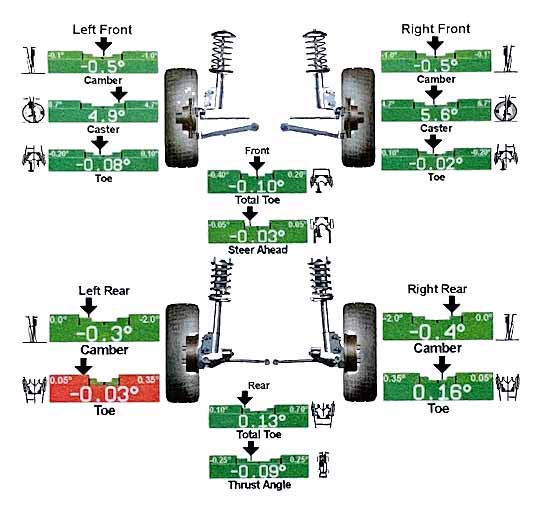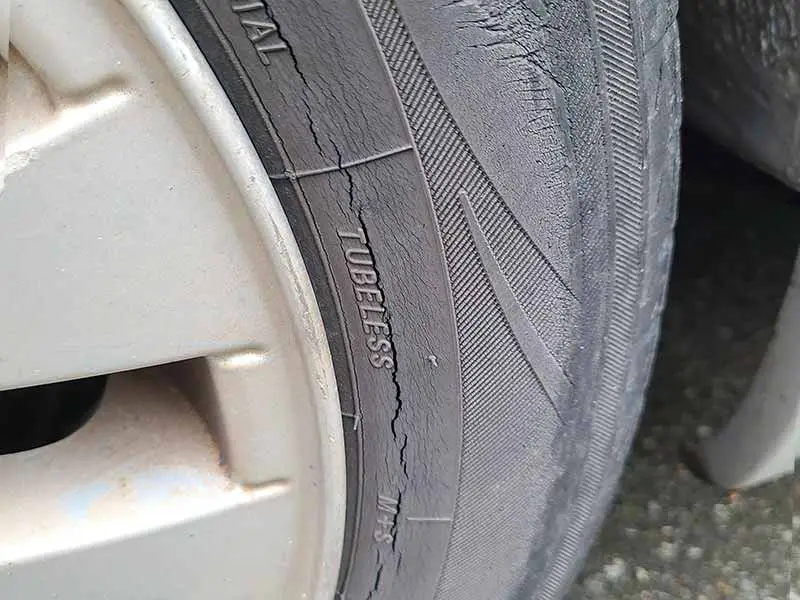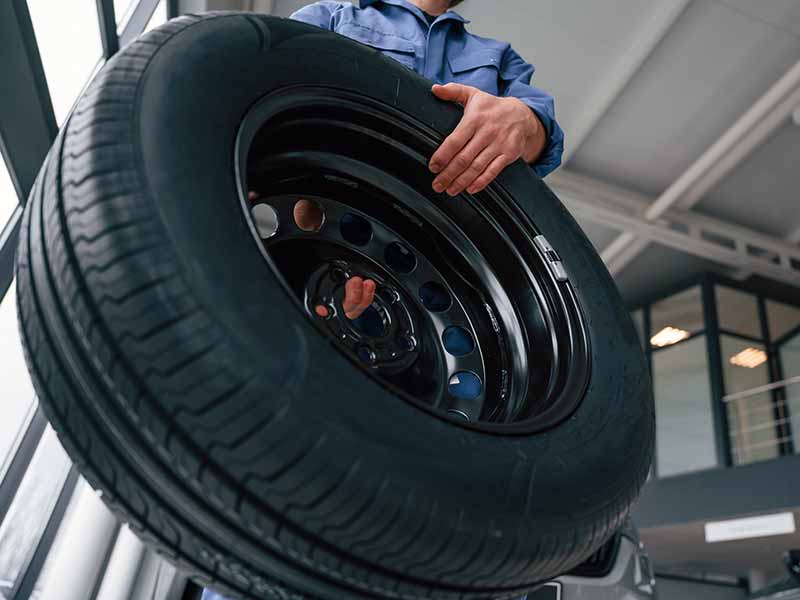Are you curious about how to extend the life of your tires? You’ve likely invested a fair amount in them, and understandably, you want to get the most out of that investment. In a world where every mile counts, knowing how to make your tires last longer is not just about saving money; it’s about ensuring a safer and more enjoyable driving experience.
How To Make Tires Last Longer
- Regularly Check Tire Pressure: Maintain the recommended pressure to prevent uneven wear.
- Rotate Tires Regularly: This ensures even wear across all tires.
- Align Wheels Periodically: Proper alignment prevents uneven wear and extends tire life.
- Drive Smoothly: Avoid hard braking and rapid acceleration to reduce tire stress.
- Avoid Overloading: Excess weight can strain tires and shorten their lifespan.
- Inspect Tires Often: Look for signs of wear, damage, or foreign objects.
- Avoid Harsh Conditions: Reduce driving on rough roads or in extreme temperatures when possible.
- Use Season-Appropriate Tires: Switch to winter tires in cold weather, if applicable.
In this article, we’ll delve into the lifespan of tires, what factors can shorten it, and the best maintenance practices to extend it. We’ll also discuss how driving habits influence tire wear and how to care for tires during extended periods of non-use.
How Long Should Tires Last?
Tires are more than just a part of your vehicle; they’re the foundation of your driving experience. Understanding their lifespan isn’t just about saving money, it’s about ensuring safety and reliability on every trip. So, how long should tires last? Well, it’s not a one-size-fits-all answer.
The General Lifespan of Tires
- Expected Mileage: On average, tires for passenger cars and trucks are designed to last about 60,000 to 75,000 miles. But remember, this is just a ballpark figure. The actual lifespan can vary based on several factors, from the type of tire you choose to how you handle your vehicle.
- Quality Matters: Investing in quality tires can make a real difference. It’s often said that you get what you pay for, and this rings true for tires. Do more expensive tires last longer? Find out how spending a bit more upfront can impact your tire’s longevity.
Influencing Factors
- Tire Type: Different vehicles need different types of tires. A compact car’s tires will have a different lifespan than those on a heavy truck.
- Driving Habits: How you drive plays a huge role. Frequent braking, sharp turns, and high speeds can all shorten tire life.
- Maintenance Routine: Regular maintenance is key. This includes keeping your tires properly inflated, aligned, and rotated.
Understanding tire tread wear is crucial in assessing their lifespan. It’s not just about the miles but how those miles are driven and cared for. Wondering about the life of 40,000-mile tires or 100,000-mile tires? How long do 40,000-mile tires last, and are 100,000-mile tires really a thing?

Factors Shortening Tire Life
When it comes to tire longevity, it’s not just about the miles, but how you make them count. Certain factors can take a toll on your tires, shortening their life. Let’s dive into what they are and how you can mitigate them.
Common Culprits of Wear and Tear
- Improper Tire Pressure: It’s the silent tire killer. Too high or too low, both extremes are bad news for tire health. Regularly checking and maintaining the right pressure is a must.
- Wheel Misalignment: Ever feel your vehicle pulling to one side? That’s a sign of misalignment, leading to uneven and accelerated tire wear. Getting your wheels aligned periodically is crucial.
- Rough Driving Habits: Hard braking, fast acceleration, and sharp turns aren’t just hard on your brakes and fuel economy – they’re tough on your tires too.
Proactive Steps for Tire Care
- Routine Checks: A monthly once-over of your tires can catch issues early. Look for signs of uneven wear, cracks, or bulges.
- Balancing Act: Wheel balancing isn’t just about a smooth ride. It helps distribute weight evenly, preventing premature wear.
- Avoiding the Pitfalls: Simple adjustments to your driving style can add years to your tires’ life. Smooth and steady wins the race.

Maintenance Tips for Prolonged Tire Life
To keep your tires rolling longer, a little care goes a long way. Here are some essential maintenance tips that can help extend your tires’ lifespan.
Regular Tire Inspections and Maintenance
- Visual Inspections: Keep an eye out for wear and tear, cuts, or anything unusual.
- Pressure Checks: Maintain the correct tire pressure as recommended for your vehicle. It’s a simple step with a big impact.
Importance of Proper Tire Inflation
- Fuel Efficiency: Properly inflated tires can improve your vehicle’s fuel economy.
- Safety: Under or over-inflated tires can compromise handling and braking.
- Even Wear: Correct inflation ensures even tire wear, extending their life.
The Role of Tire Rotation
- Balanced Wear: Regular rotation helps tires wear evenly, maximizing their lifespan.
- Rotation Schedule: Most manufacturers recommend rotating tires every 5,000 to 8,000 miles.
Wheel Alignment: A Key to Tire Longevity
- Alignment Checks: Get your alignment checked annually or if you notice any handling issues.
- Impact of Misalignment: Poor alignment can lead to uneven and rapid tire wear.

Driving Habits and Tire Longevity
How you drive can significantly impact how long your tires last. Let’s explore this often-overlooked aspect.
The Impact of Driving Speed
- Driving Slower: While it may seem counterintuitive, driving at a moderate speed can actually help extend tire life. High speeds generate more heat, accelerating tire wear.
- Consistent Speed: Maintaining a steady pace, rather than rapid acceleration and braking, contributes to more uniform tire wear.
Other Driving Habits to Consider
- Smooth Maneuvers: Gentle turns and gradual stops can reduce the strain on your tires.
- Avoiding Potholes and Obstacles: Hitting obstacles can damage tires and affect their alignment and balance.
Making a Difference with Mindful Driving
- Awareness: Being conscious of your driving style and road conditions can go a long way.
- Regular Checks: After long trips or driving in harsh conditions, give your tires a quick check.

Tire Longevity Without Driving
Even when your vehicle is parked for extended periods, your tires are still aging. Understanding this aspect of tire care is crucial for maintaining their longevity.
How Tires Age in Storage
- Rubber Deterioration: Tires degrade over time, even without use. The rubber compounds can break down, leading to dry rot.
- Pressure Loss: Tires gradually lose air pressure, even when not in use.
Best Practices for Storing Tires
- Ideal Conditions: Store tires in a cool, dry place away from direct sunlight and ozone sources like electric motors.
- Maintaining Pressure: Check and maintain tire pressure even during prolonged storage periods.
Longevity of Unused Tires
- Shelf Life: Generally, tires have a shelf life of about 6 years from the date of manufacture, regardless of use.
- Regular Inspection: Even if you’re not driving, it’s important to inspect stored tires periodically for any signs of degradation.
Resources
Below are some links you may find helpful when learning about tires:
Final Thoughts
The key to making your tires last longer lies in understanding their expected lifespan, acknowledging the factors that can shorten it, and adopting regular maintenance and mindful driving habits.
Remember, your tires are a critical component of your vehicle’s safety and performance. By giving them the attention they deserve, you can not only save money but also ensure a safer and more efficient driving experience.
Good luck and happy motoring.




